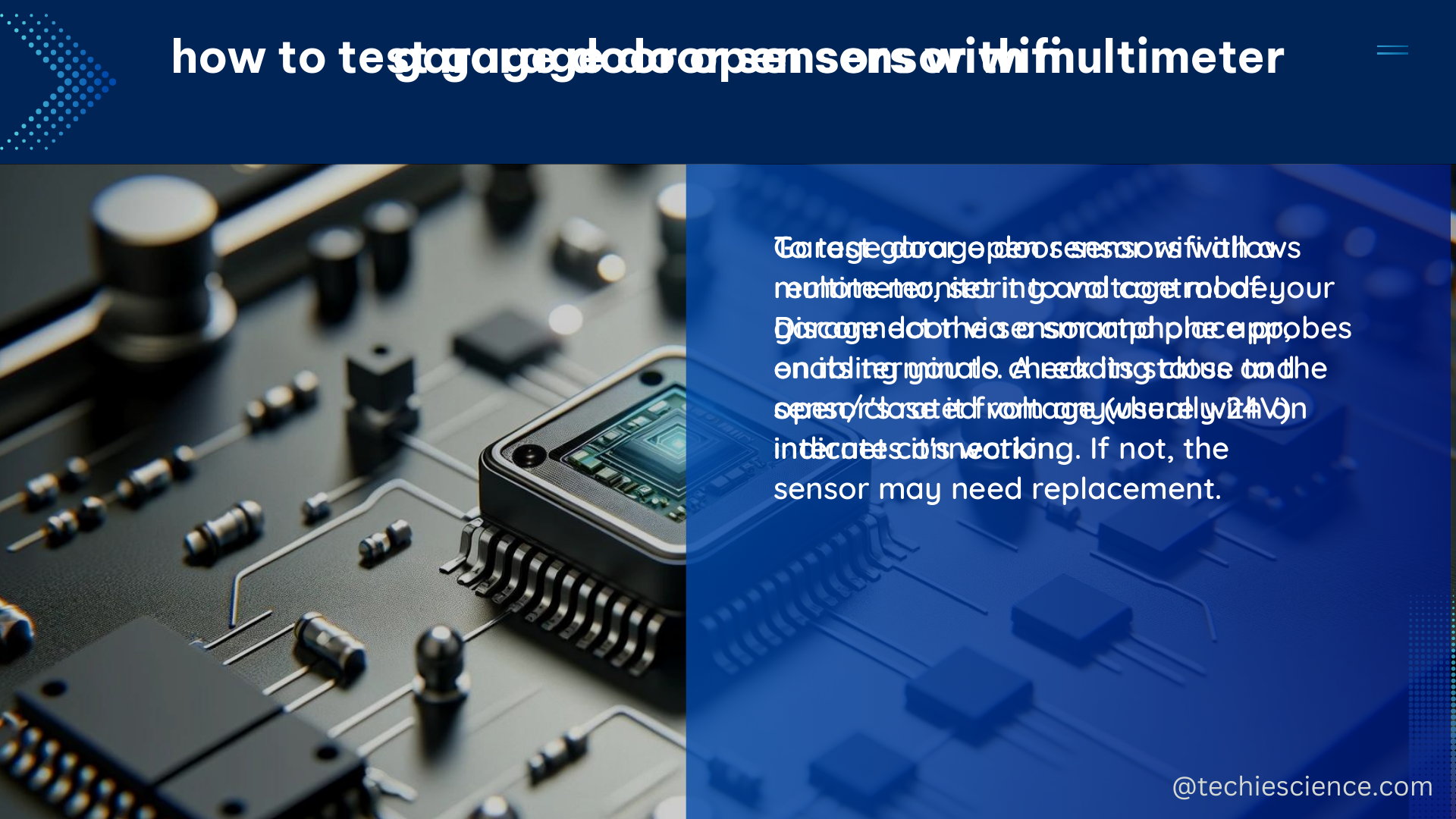Garage door open sensors with WiFi capabilities have become increasingly popular due to their convenience and advanced features. These sensors allow users to monitor and control their garage doors remotely using a smartphone or other WiFi-enabled device. This comprehensive guide will provide you with detailed information on the technical specifications, connectivity, power consumption, data transmission, security, and DIY installation of garage door open sensors with WiFi.
Connectivity: Seamless Integration with Your WiFi Network
Garage door open sensors with WiFi typically utilize the 2.4GHz or 5GHz frequency bands to establish a connection with your home’s WiFi network. These sensors boast an impressive range of up to 150 feet (45.72 meters) indoors and up to 300 feet (91.44 meters) outdoors, ensuring reliable connectivity even in larger homes or garages.
The sensors support the IEEE 802.11b/g/n WiFi standards, providing a stable and fast connection with data transmission speeds of up to 150 Mbps. This high-speed data transfer allows for real-time notifications and seamless remote control of your garage door, ensuring you always have up-to-date information on its status.
Power Consumption: Efficient and Long-Lasting Performance

Garage door open sensors with WiFi are designed with power efficiency in mind, typically operating on batteries with a low power consumption rate. This allows the sensors to maintain their functionality for up to a year on a single set of batteries, minimizing the need for frequent battery replacements.
For users who prefer a more permanent power solution, some models of garage door open sensors with WiFi also support Power over Ethernet (PoE) technology. PoE provides a continuous power supply to the sensor, eliminating the need for battery maintenance and ensuring uninterrupted operation.
Data Transmission: Real-Time Monitoring and Control
The high-speed data transmission capabilities of garage door open sensors with WiFi enable real-time monitoring and control of your garage door. These sensors can transmit data at speeds of up to 150 Mbps, allowing for instant notifications and remote access to your garage door’s status.
This rapid data transmission ensures that you receive timely alerts when your garage door is opened or closed, empowering you to take immediate action if necessary. Additionally, the remote control functionality allows you to open or close your garage door from anywhere, providing added convenience and security.
Security: Safeguarding Your Home and Data
Garage door open sensors with WiFi prioritize data privacy and security to protect your home and personal information. These sensors utilize advanced encryption protocols, such as WPA2 or WPA3, to secure the WiFi connection and prevent unauthorized access.
Furthermore, each sensor is equipped with unique identifiers and passwords, ensuring that only authorized users can access and control the garage door. This robust security measures provide peace of mind, knowing that your home and data are safeguarded against potential threats.
Technical Specifications: Detailed Overview
To help you make an informed decision, here are the typical technical specifications of garage door open sensors with WiFi:
| Specification | Details |
|---|---|
| WiFi Standards | IEEE 802.11b/g/n |
| Frequency Bands | 2.4GHz or 5GHz |
| Data Transmission Rate | Up to 150 Mbps |
| Power Consumption | Low power, typically battery-operated |
| Encryption Protocols | WPA2 or WPA3 |
| Connectivity Range | Up to 150 feet (45.72 meters) indoors, up to 300 feet (91.44 meters) outdoors |
DIY Installation: A Step-by-Step Guide
Installing a garage door open sensor with WiFi is a straightforward process that can be easily accomplished through a DIY approach. Follow these steps to set up your sensor:
-
Choose a Location: Carefully select a spot near your garage door opener where the sensor can easily detect the door’s position. This will ensure optimal performance and reliable operation.
-
Mount the Sensor: Secure the sensor to the wall or ceiling using the provided mounting hardware. Ensure that the sensor is positioned in a way that allows it to accurately monitor the garage door’s movements.
-
Connect to WiFi: Follow the manufacturer’s instructions to connect the sensor to your home’s WiFi network. This typically involves downloading a mobile app or accessing an online portal to complete the setup process.
-
Test the Sensor: After the installation and WiFi connection are complete, test the sensor’s functionality by opening and closing the garage door. Verify that the sensor accurately detects the door’s movements and that you can receive real-time notifications or control the door remotely.
By following these steps, you can easily integrate a garage door open sensor with WiFi into your home, providing you with the convenience and security of remote monitoring and control.
Conclusion
Garage door open sensors with WiFi offer a range of advanced features and benefits, making them a popular choice for homeowners. From seamless connectivity and efficient power consumption to robust security and real-time data transmission, these sensors provide a comprehensive solution for managing your garage door remotely.
Whether you’re looking to enhance the security of your home, improve convenience, or simply stay informed about your garage door’s status, a WiFi-enabled garage door open sensor is a valuable investment. By understanding the technical specifications and following the DIY installation guide, you can easily integrate this technology into your home and enjoy the benefits it offers.
References
- Transit Signal Priority (TSP): A Planning and Implementation Handbook
- WiFi, and WiMAX, and the expansion of power-limited devices such as garage door openers and data and TSPI data, along with sensor streams to.
- Digital Practitioner Body of Knowledge™ Standard

The lambdageeks.com Core SME Team is a group of experienced subject matter experts from diverse scientific and technical fields including Physics, Chemistry, Technology,Electronics & Electrical Engineering, Automotive, Mechanical Engineering. Our team collaborates to create high-quality, well-researched articles on a wide range of science and technology topics for the lambdageeks.com website.
All Our Senior SME are having more than 7 Years of experience in the respective fields . They are either Working Industry Professionals or assocaited With different Universities. Refer Our Authors Page to get to know About our Core SMEs.